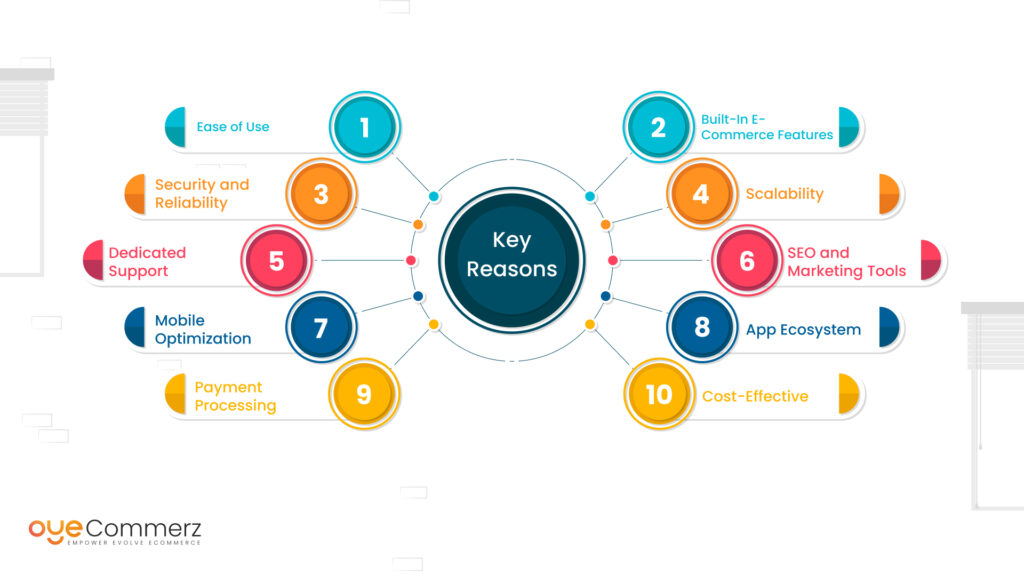Transitioning from WordPress to Shopify is an exciting step toward optimizing your e-commerce operations. As businesses expand, selecting a platform that aligns with growth potential, UX, and flexibility is essential. Shopify is widely recognized as a favorite for e-commerce professionals, offering superior flexibility, data protection, and user-friendliness. In this guide, we will delve into the transformative impact of this migration, highlight the advantages, and provide actionable steps to facilitate a seamless transition.
1. Why Migrate from WordPress to Shopify?
WordPress, paired with WooCommerce, has served countless online stores. Nevertheless, as businesses scale, challenges like plugin dependency, security vulnerabilities, and technical complexities can hinder growth. Shopify, designed explicitly for digital retail, addresses these issues with an comprehensive, intuitive solution. Real data back this transition—Shopify powers over 4.4 million stores worldwide, with a reported 10% increase in sales performance for numerous merchants after migration.
2. Key Benefits of Shopify for E-commerce Success
Shopify’s powerful platform is tailored for scaling brands. Its standout features include:
- Effortless Design Flexibility: Shopify offers over 80 expertly crafted themes.
- Integrated Tools: Features like Shopify Payments and built-in SEO streamline operations.
- Global Reach: Currency versatility and localization features enable businesses to reach global markets.
Additionally, Shopify delivers an uptime rate of 99.98%, guaranteeing your website is always operational.
3. Getting Ready for Your WP-to-Shopify Transition
Prior to starting the migration process, assess your existing setup. Review product data, customer details, and search engine rankings. Tools like Shopify’s Migration Kit or third-party solutions help ease the transition. Create a detailed strategy, making sure all assets—item details, images, and articles—are ready for seamless import.
4. Data Migration: A Critical Step
Data migration forms the foundation for a successful transition. When migrating from WP to Shopify, prioritize:
- Inventory Details: SKU, item Shopify data transfer services summaries, and categories.
- Client Information: Emails, order history, and custom fields.
- SEO Optimization: Retain meta tags, URLs, and forwarding paths to avoid SEO losses.
Use apps like LitExtension to streamline data Expert Shopify developers transfer while minimizing errors.
5. Customizing Your Shopify Store
After the move, customizing your Shopify store ensures it reflects your brand. Take advantage of Shopify’s drag-and-drop editor to create layouts with ease. Shopify's themes are mobile-responsive, providing a smooth UX across platforms—a critical factor, since 74% of e-commerce traffic is generated by mobile visitors.
6. How to Protect Your SEO Rankings When Switching Platforms
Search engine optimization is crucial for preserving your visibility during migration. Shopify is highly optimized for search engines with organized link formatting, built-in optimization tools, and seamless blog integration. Make sure you:
- Implement 301 redirects for existing links.
- Optimize new pages with keyword-rich content.
- Leverage plugins like Plug in SEO to monitor performance after the switch.
7. Post-Migration Testing
Once the migration is complete, run detailed checks.
Check: - Website speed (Shopify boasts faster speeds in contrast with WordPress).
- Payment integration reliability and checkout processes.
- Mobile responsiveness.
Testing guarantees your store delivers a smooth shopping experience from day one.
8. Real-Life Success Story
An example of effective platform switching is Gymshark, a fitness apparel brand that moved to Shopify. Post-migration, the company experienced a 60% boost in mobile sales and significantly lowered site downtime. This showcases the capabilities of Shopify in enhancing e-commerce growth.
9. Challenges and Solutions
Migration comes with challenges, such as data integrity and reconfiguring custom functionalities. However, Shopify’s robust support and third-party experts make overcoming these hurdles manageable. Partnering with experienced Shopify developers ensures a smooth transition.
10. Starting Your Journey with Shopify
Switching from WP to Shopify represents a strategic decision to online retail. By focusing on growth, streamlining operations, and improving buyer satisfaction, Shopify enables companies to succeed in competitive markets.
Final Thoughts
Switching from WP to Shopify offers a smart solution that can greatly enhance your e-commerce success. With a well-structured strategy, the right tools, and professional guidance, you can achieve new growth opportunities.
Excited to start the journey? Let’s discuss how our Shopify migration services can transform your online store. Get in touch today, or ask yourself: Can your business afford to miss out on Shopify’s growth potential?
